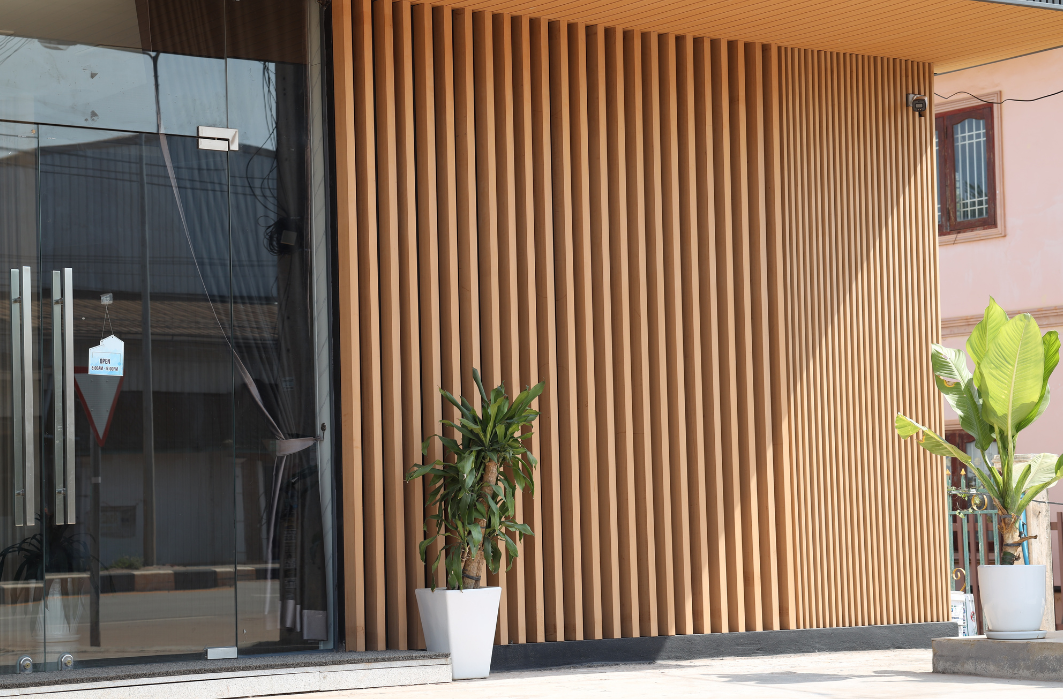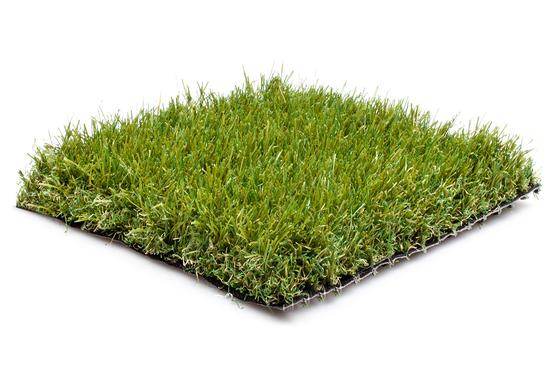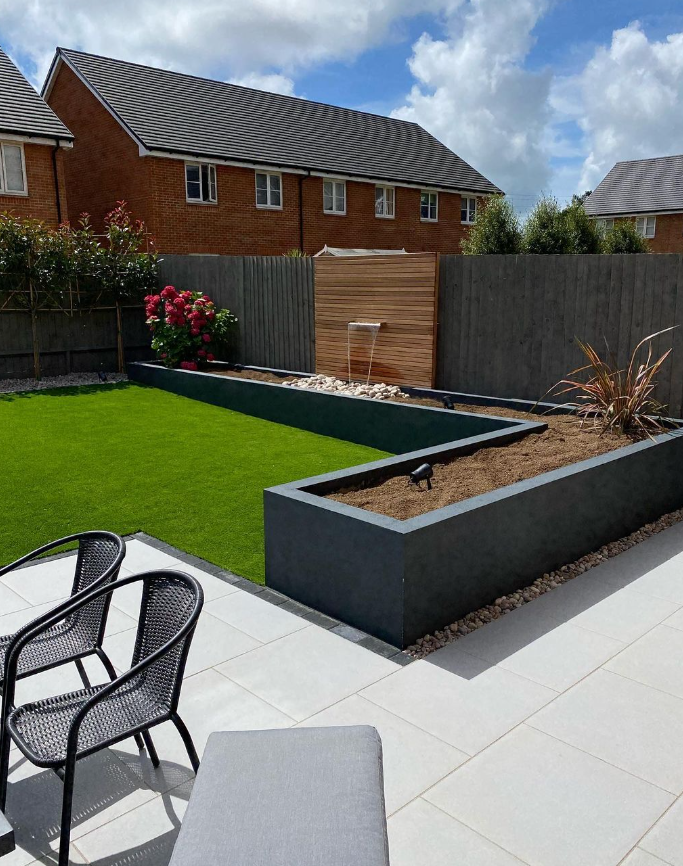
Horizontal or Vertical Cladding: Which Works Best?
Slatted cladding has become a favourite choice for homeowners and designers because it instantly gives an outdoor space a more polished, architectural feel. Whether you’re updating a garden fence, or refreshing an outdoor building, cladding is one of those details that completely changes first impressions.
The big decision, though, is direction.
Horizontal cladding creates a wider, grounded appearance that feels classic and familiar, while vertical cladding delivers height and drama for a bolder look. Both styles have clear strengths, so the question isn’t which is better overall, but which is best for your project? The answer depends on your space, your design ambitions, and the atmosphere you want to create.
What is Slatted Cladding?

Slatted cladding is a modern approach to finishing outdoor walls, fences, and garden structures with long, narrow strips that sit side by side to create a sleek, textured surface. Instead of a flat wall, you get depth and rhythm, which can dramatically change how a space feels. The panels are often made from timber-effect cladding or composite materials, which means you enjoy the look of real wood without the sanding, staining, or regular upkeep that timber usually demands.
It’s a technique that has become highly popular in contemporary outdoor design, especially for outdoor rooms, boundaries, and modern garden wall cladding. Many people also choose outdoor slatted panels for screening areas or creating stylish privacy features. Whether you’re a DIY renovator upgrading a garden or a designer shaping a statement exterior, slatted cladding provides an easy way to combine low maintenance with high visual impact.
Horizontal Slatted Cladding: Features and Benefits
Horizontal cladding is often the first style people picture, and that’s partly because it feels so familiar. For decades, garden fences have used horizontal lines, so this option tends to blend naturally with existing buildings. It works especially well if you want to give a wall or fence a broader, more grounded appearance. In some respects, it’s the safer choice, yet it still delivers a stylish, timeless finish that works for both traditional and contemporary homes.
Many DIY renovators find this style appealing because it’s usually easier to measure, cut, and install compared to other approaches. When used for cladding for fences, it creates a neat, uniform look that can help tie a whole outdoor space together. Designers, too, often recommend horizontal layouts when consistency and subtlety matter more than bold statements.
Benefits of horizontal cladding:
-
Creates a wider, more expansive appearance
-
Suits cladding for fences and screening projects
-
Simple to align with windows, doors, and other building lines on outdoor buildings
-
A timeless choice that balances tradition and modernity
-
DIY-friendly for home renovation projects
Vertical Slatted Cladding: Features and Benefits
Vertical cladding takes a different approach, and it tends to make a much bolder statement. Drawing the eye upward, it gives the impression of extra height, which can make walls, façades, and garden features feel taller and more striking. This direction often suits modern architecture, where clean lines and strong geometry are celebrated. If your goal is a sleek, stand-out finish, vertical is usually the way to go.
Beyond aesthetics, vertical panels can have a practical edge. On certain surfaces, the vertical orientation helps water drain more quickly, which may reduce staining or weathering. For smaller garden structures, the elongated effect can also help spaces feel less confined. Architects and designers often turn to vertical layouts when they want to inject a sense of drama into modern garden wall cladding.
Benefits of vertical cladding:
-
Adds height and drama to outdoor spaces
-
Creates a bold, architectural look
-
Helps with water runoff on some surfaces
-
Great for smaller garden features
-
Ideal for contemporary designs seeking impact
How to Decide Between Horizontal and Vertical Slatted Cladding

Choosing between horizontal and vertical slatted cladding isn’t about which is objectively better; it’s about which direction best suits your project. The decision often comes down to the effect you want to achieve and the conditions of the space you’re working with.
If you’re aiming for a wider, grounded look, horizontal cladding tends to be the more natural option, especially for fences or where you want consistency. On the other hand, if your goal is to create extra height, or to make a garden room feel more striking, vertical cladding usually delivers more impact.
Practical factors matter too. Horizontal layouts are typically easier for DIY installers, while vertical panels can help with water drainage on exposed walls. For designers, it often comes down to balancing functionality with visual goals.
|
Feature / Goal |
Horizontal Slatted Cladding |
Vertical Slatted Cladding |
|
Visual Effect |
Wider, grounded appearance |
Taller, sleek impression |
|
Best For |
Fences, |
Bold outdoor rooms |
|
Installation |
DIY-friendly |
Slightly trickier but striking |
|
Functionality |
Great for cladding for fences |
Helps with water runoff |
Design Considerations for Each Style
Once you’ve chosen a direction, the fun part is how you integrate it with the rest of your outdoor design.
-
Pairing with other features – Horizontal lines often work better alongside decking, while vertical slats can complement the neat look of artificial grass or raised garden planters.
-
Colours and finishes – Natural timber tones bring warmth, while darker shades add contrast and sophistication. With timber-effect cladding, you get the freedom to experiment without worrying about ongoing staining or painting.
-
Light and shadow – The direction of your slats will influence how light plays across them during the day. Horizontal panels often give a softer pattern, while vertical designs can create dramatic shifting lines of shadow.
For inspiration, you could browse designer showcases on Houzz or visual boards on Pinterest, where you’ll see how subtle shifts in direction can completely reshape the atmosphere of a space.
Choosing the Right Slatted Cladding for Your Project
At the end of the day, both horizontal cladding and vertical cladding have strong design and practical benefits. Your decision really depends on whether you’d like your home or garden wall to feel broader and more traditional, or taller and more contemporary.
The best step is to see the finish for yourself. Order samples, hold them against your property, and picture how the lines will interact with the rest of your design. If you’d like expert guidance or want to discuss the best fit for your project, reach out via our contact us page.


